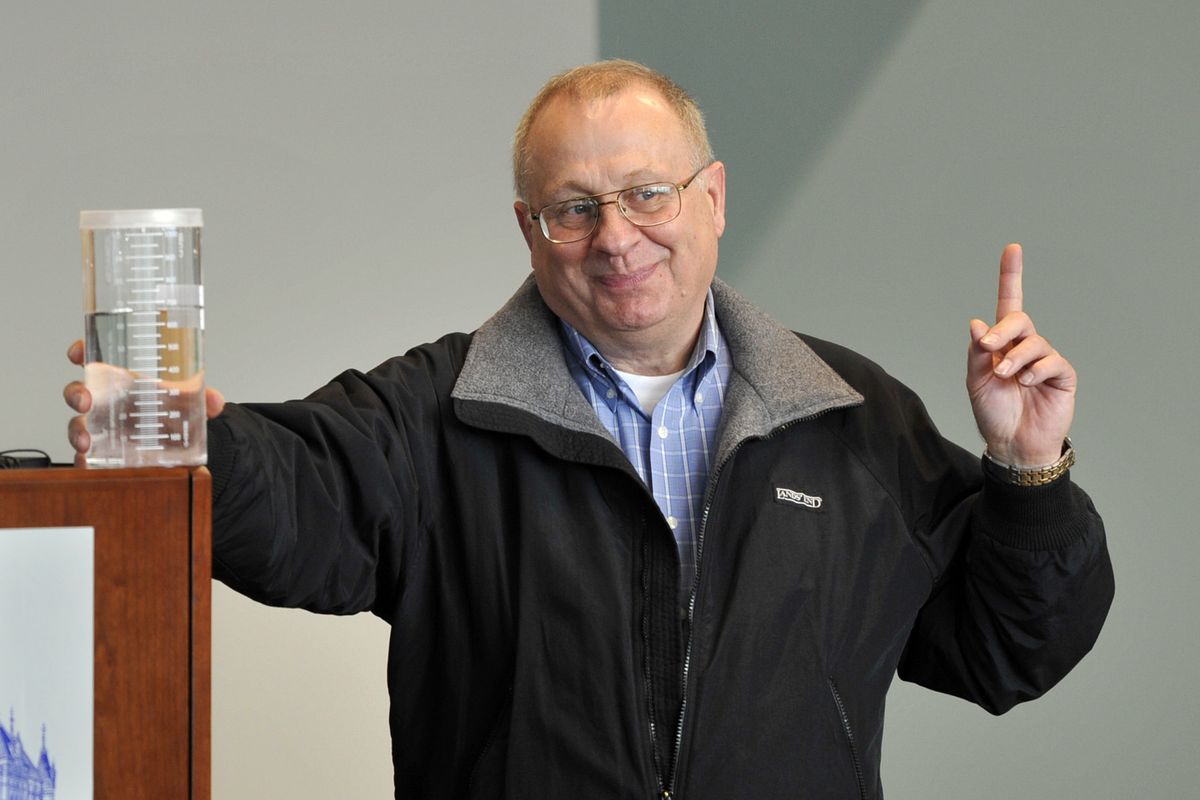State, county officials open sewage plant

Superlatives flowed Thursday in a valve-turning ceremony to open Spokane County’s new $173 million sewage treatment plant.
“Today the river gets cleaner,” said Grant Pfeifer, regional Department of Ecology director.
Other speakers hailed the 20-acre complex at 1004 N. Freya St. as world-class, best in North America, maybe best on the planet, a shining example, a gift to the community.
Sierra Club spokesman John Osborn had another name for the facility: “A new source of pollution for the Spokane River.”
Osborn said in a news release that the Sierra Club, which has filed a federal lawsuit to block new discharges into the Spokane River, now is calling for federal and state investigations into “illegal use of public funds.”
Use of federal and state money for the plant “doesn’t pass the smell test,” he said in the release.
The plant itself was odor-free. All the treatment processes are enclosed.
“Feel free to take pictures, and feel free to put them in your Christmas cards,” County Commission Chairman Al French said. “It’s our gift to the community.”
French, who joined the commission in January, credited Commissioners Todd Mielke and Mark Richard for “courage” in pushing ahead with the project while still negotiating a thicket of regulatory issues.
French said building the plant while construction costs are low allowed commissioners to reduce sewer rates for next year. Construction, which began in June 2009, is about $1 million under budget.
On Tuesday, commissioners voted to cancel scheduled rate increases and cut rates instead. Instead of rising $1.79 a month, the residential charge will drop 63 cents – from $45.04 a month to $44.41.
Spokane Valley residents will have to pay a $1.10-a-month surcharge to offset aquifer protection fees diverted by the city government.
Still, Richard and former Spokane Valley City Councilman Dick Denenny said Valley residents – the new plant’s primary customers – will benefit by avoiding a construction moratorium as capacity diminishes at the city of Spokane plant.
“This is a flagship project, one we should be very, very proud of,” said Mielke, who was the commission’s point man on the project.
He credited local conservation groups, including Spokane Riverkeeper, for constructive criticism that “made this project better all along the way.”
Most of all, Mielke credited county Utilities Director Bruce Rawls, who will have devoted about a third of his career to the treatment plant when he retires next spring.
“He has really been the glue that has kept this project together,” Mielke said.
Rawls declined to make a speech but displayed a beaker of sparkling, clear water the plant produced earlier in the morning. (Yes, he admitted, the plant was already running when dignitaries turned the ceremonial valve.)
More than 99.9 percent of the algae-feeding phosphorus had been removed from the water in the beaker, officials said.
Also, they said, 80 percent more cancer-causing PCBs were removed than if the water had been treated at the Spokane plant.
County water reclamation manager Dave Moss told commissioners Tuesday that he is confident the new facility will meet summertime ammonia standards before they take effect on June 1.
That risk belongs to the CH2M Hill engineering firm, which has a contract to design, build and operate the plant.